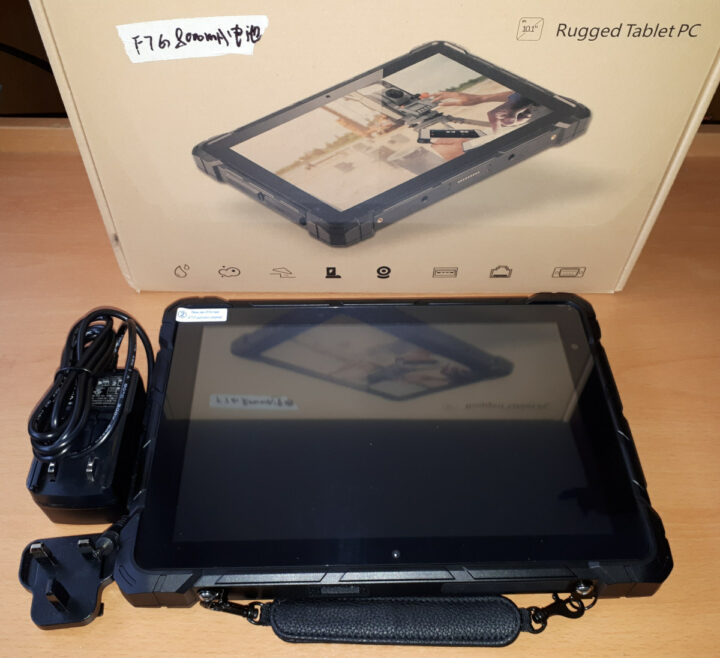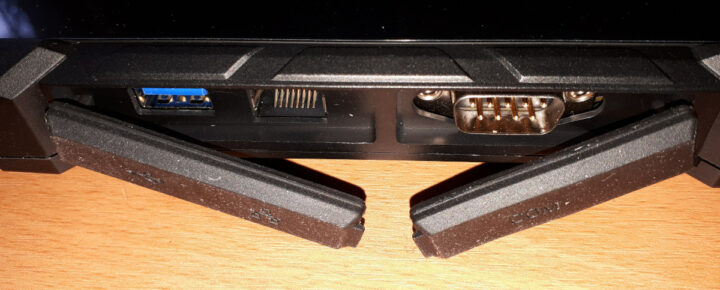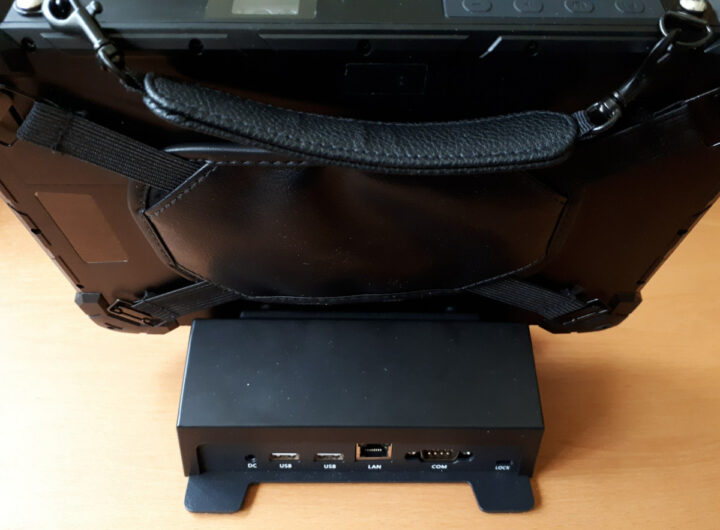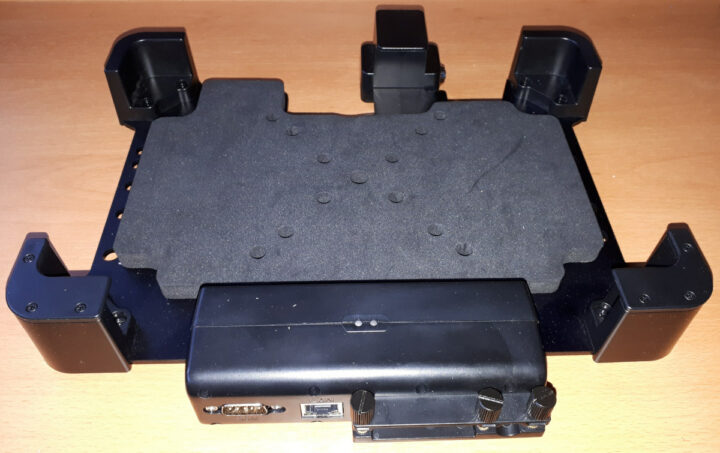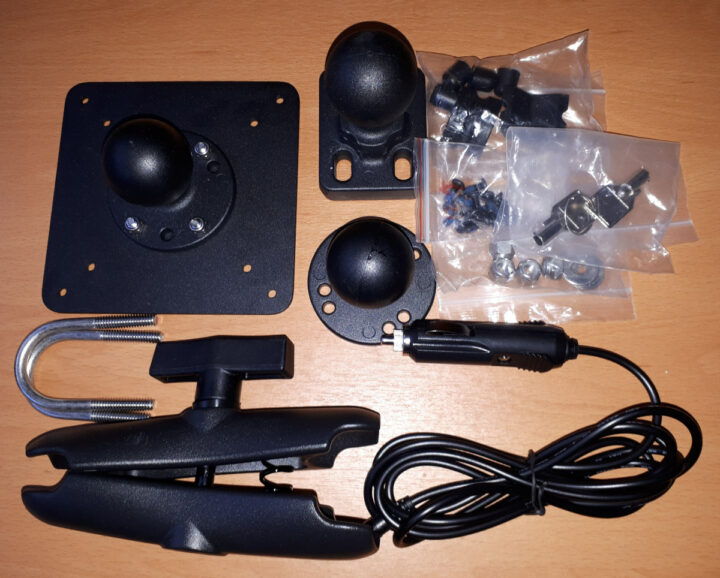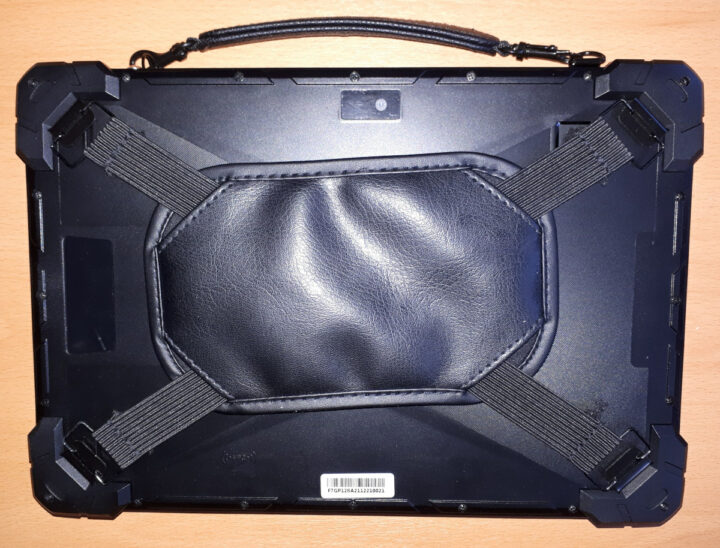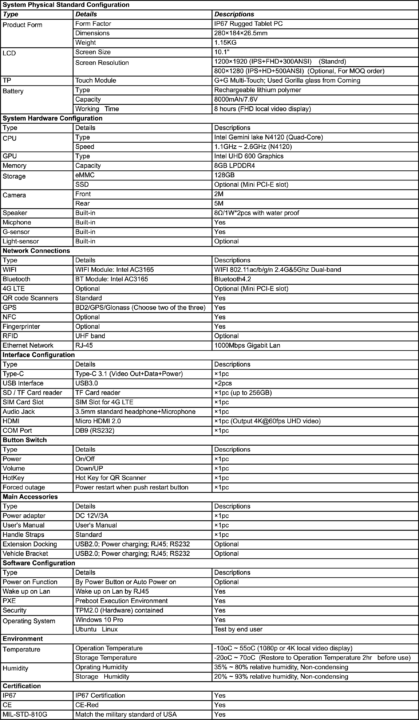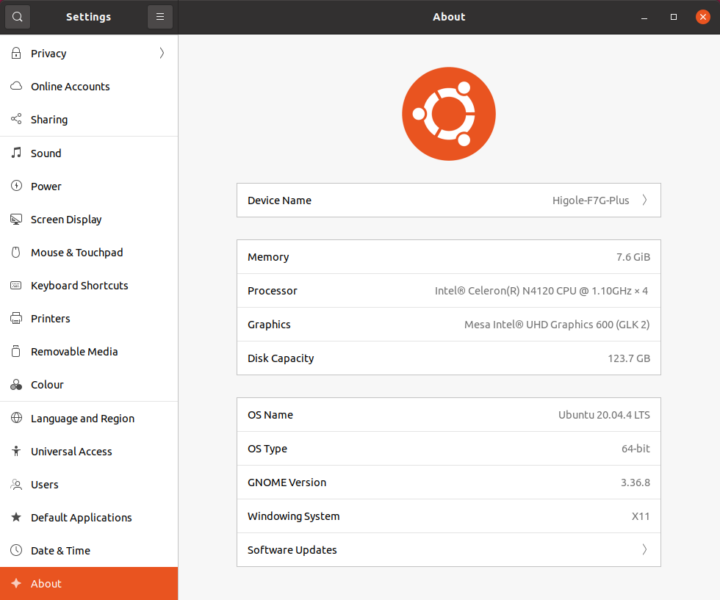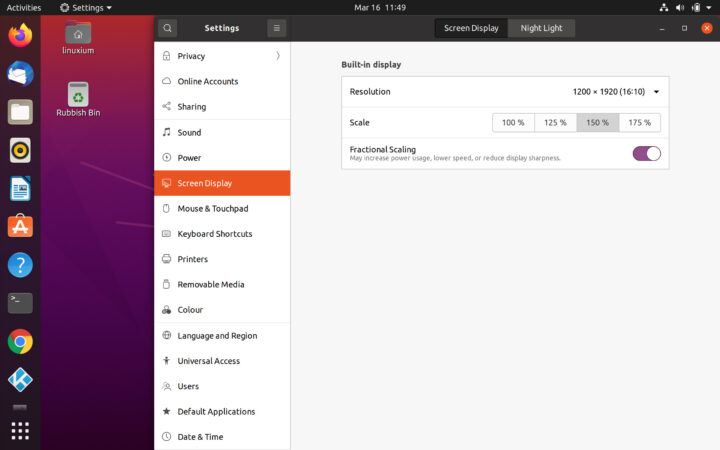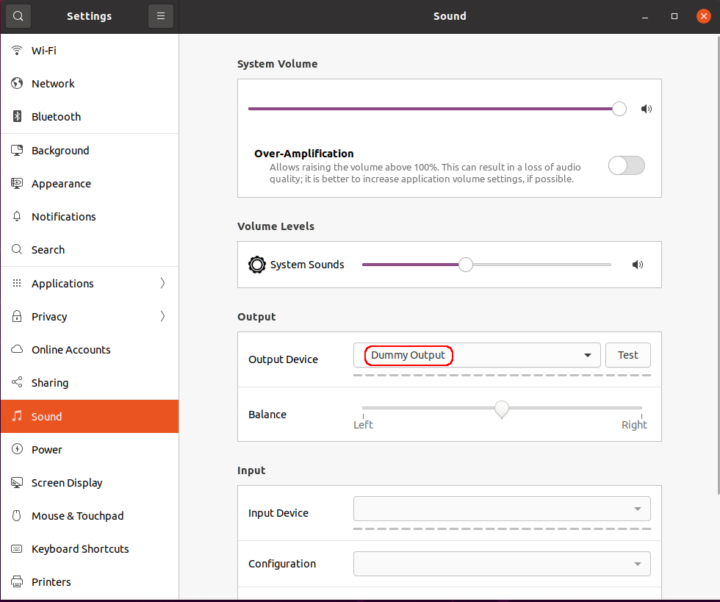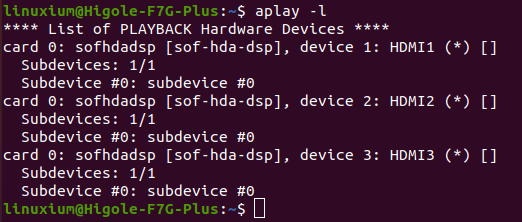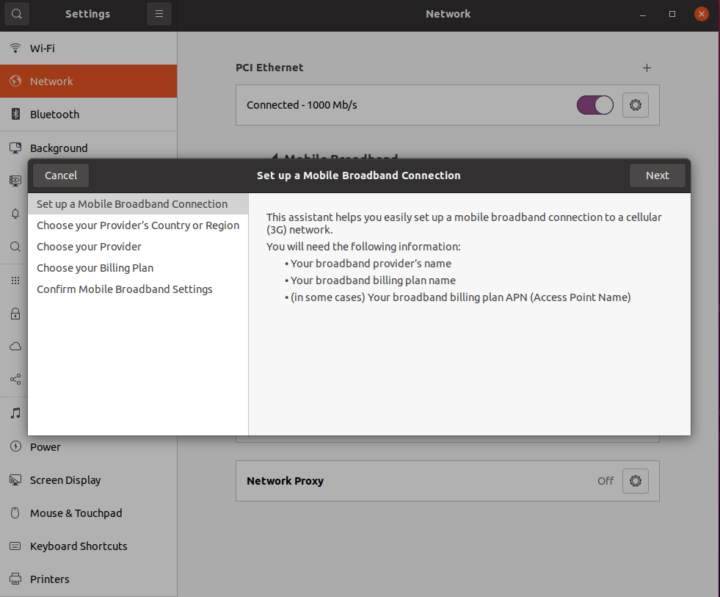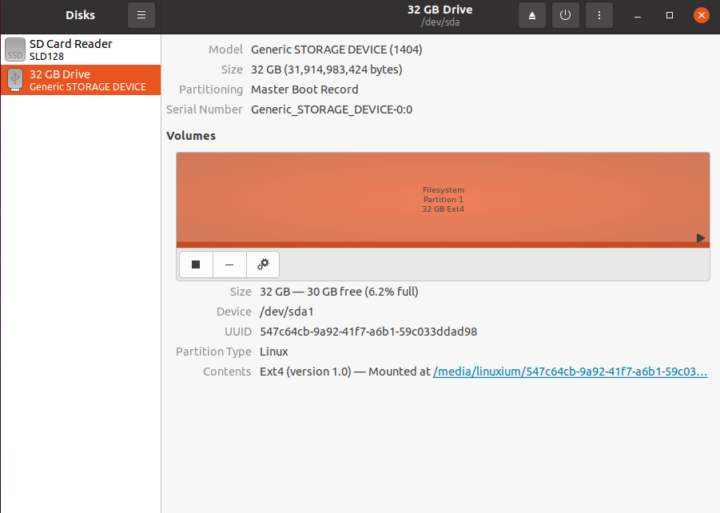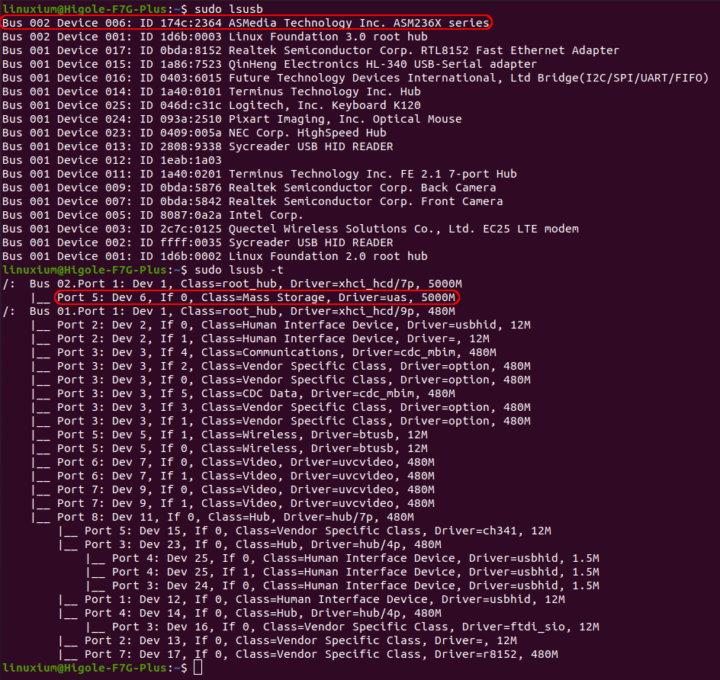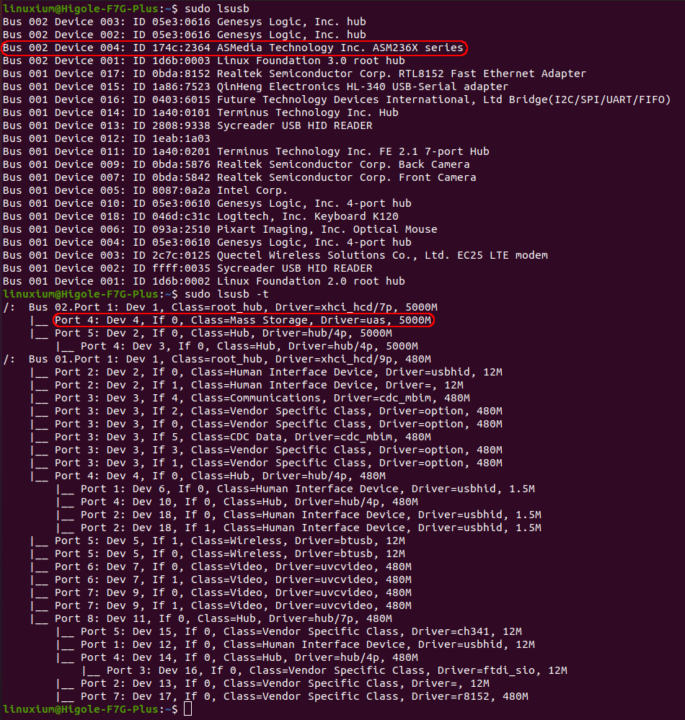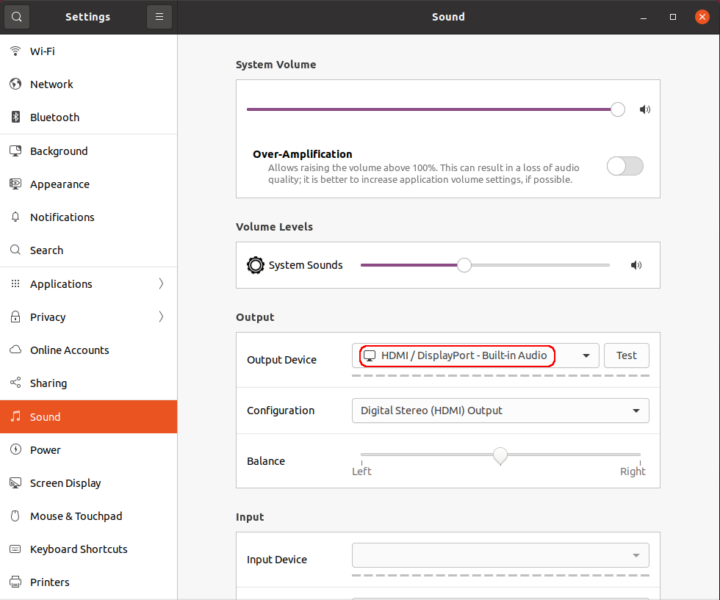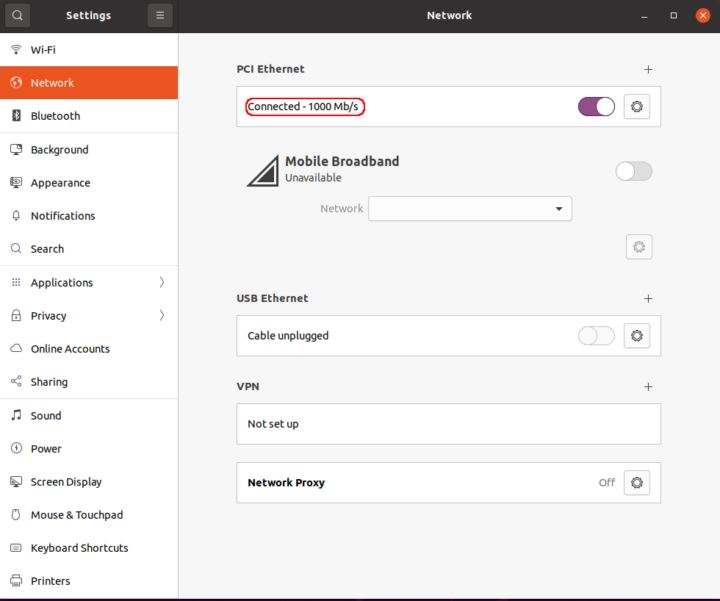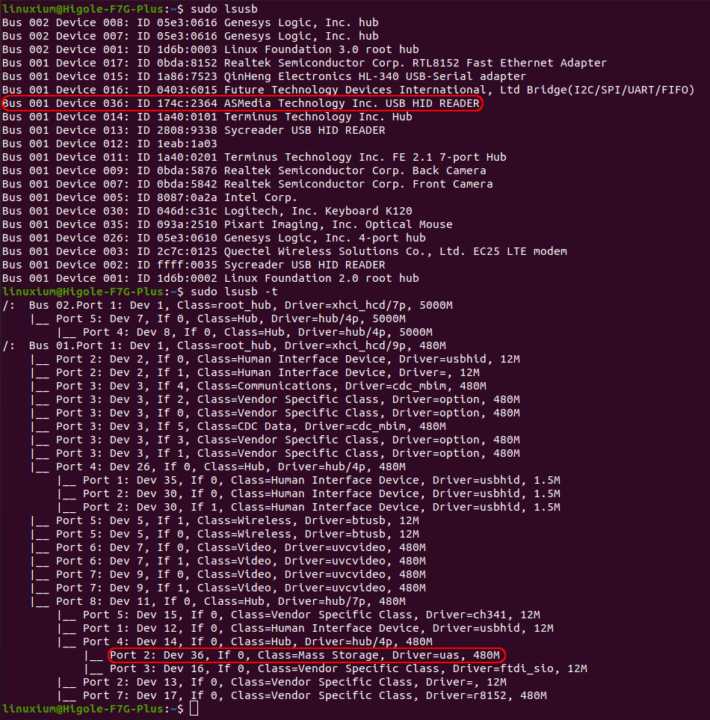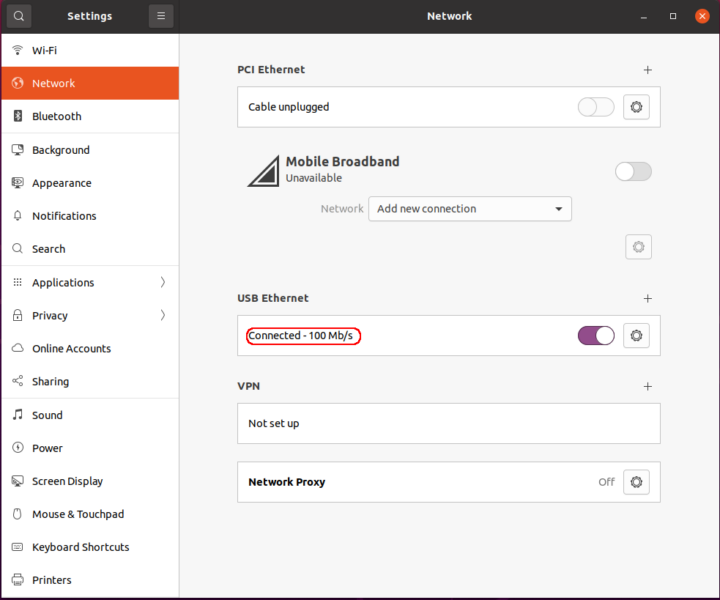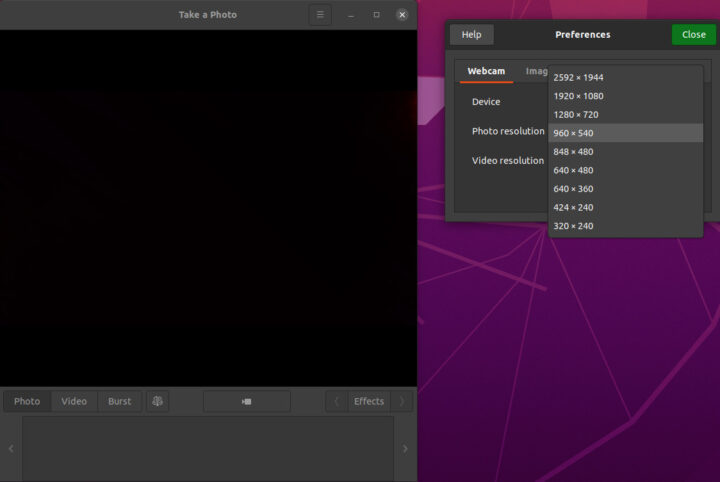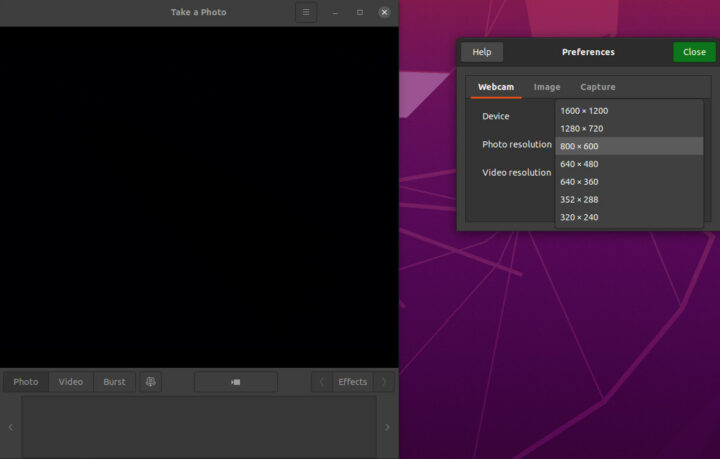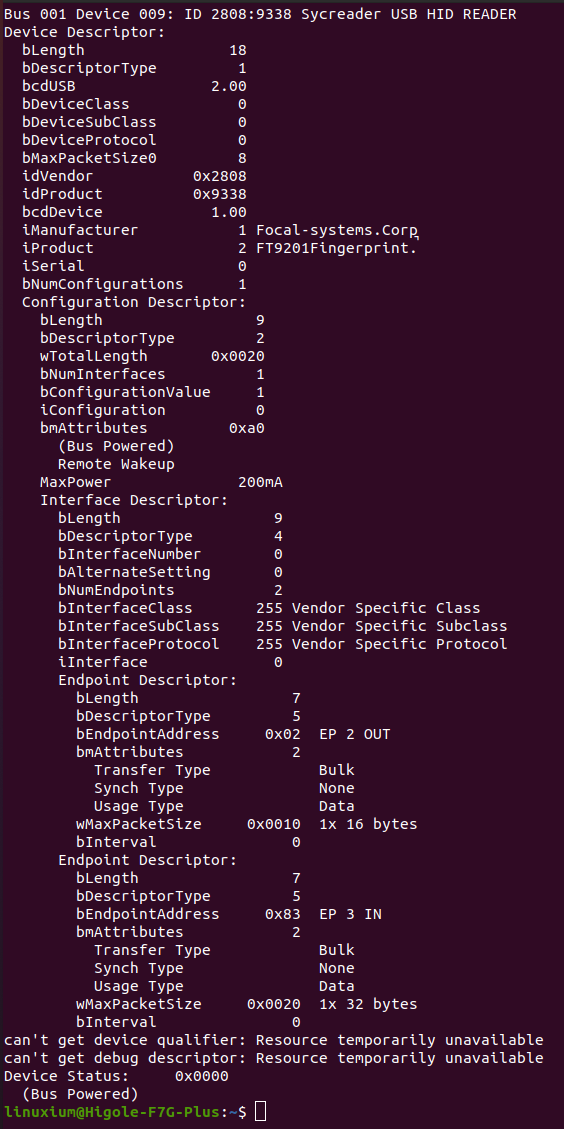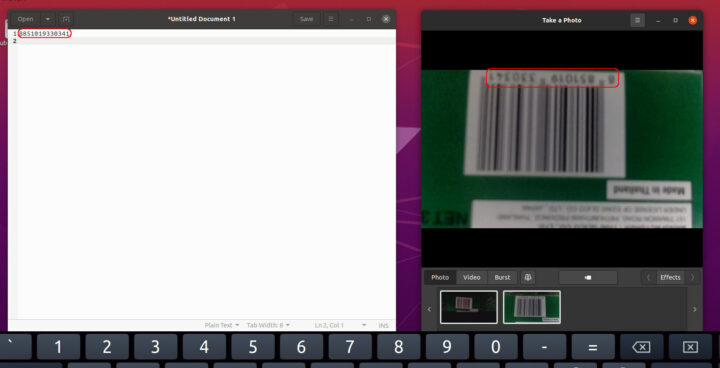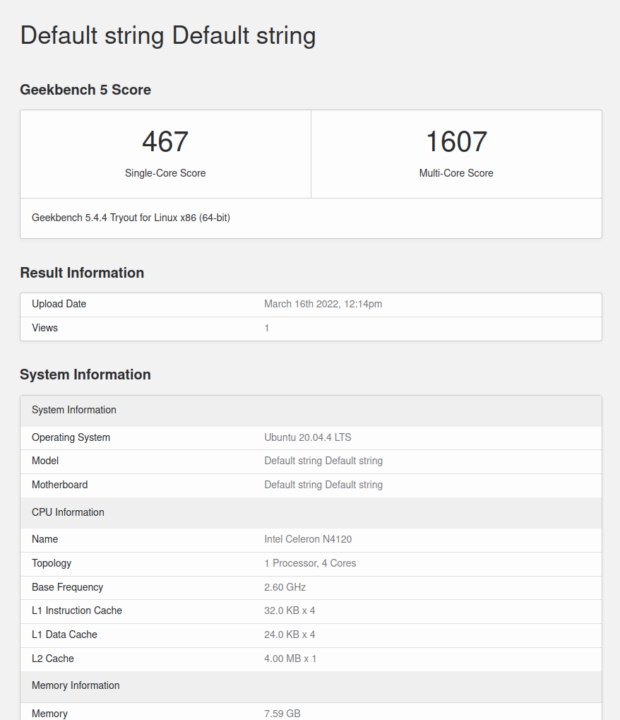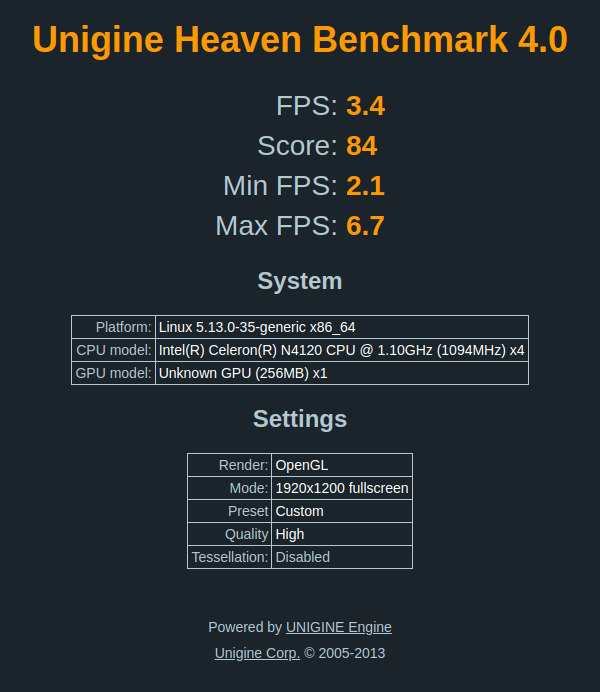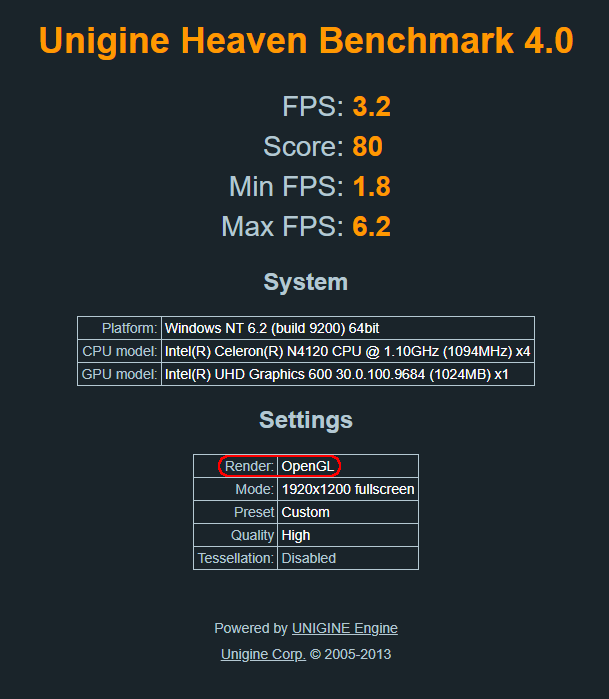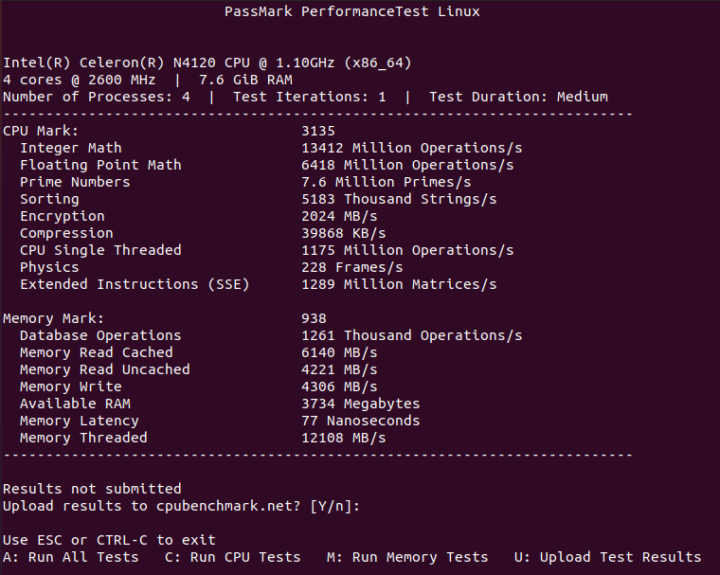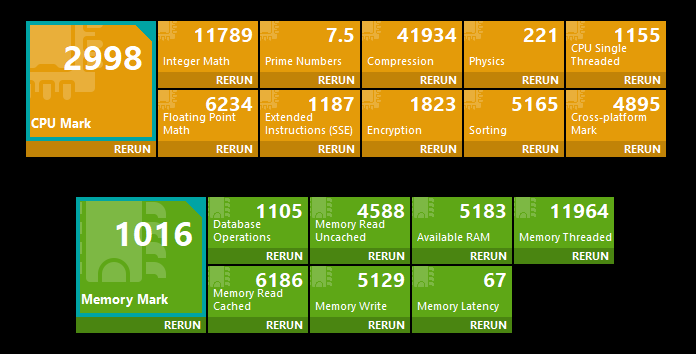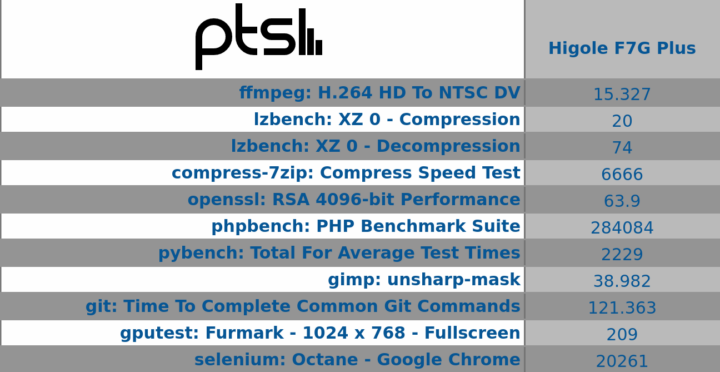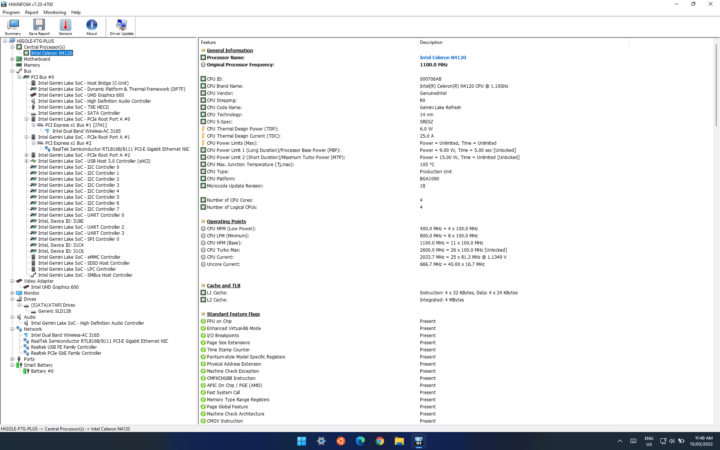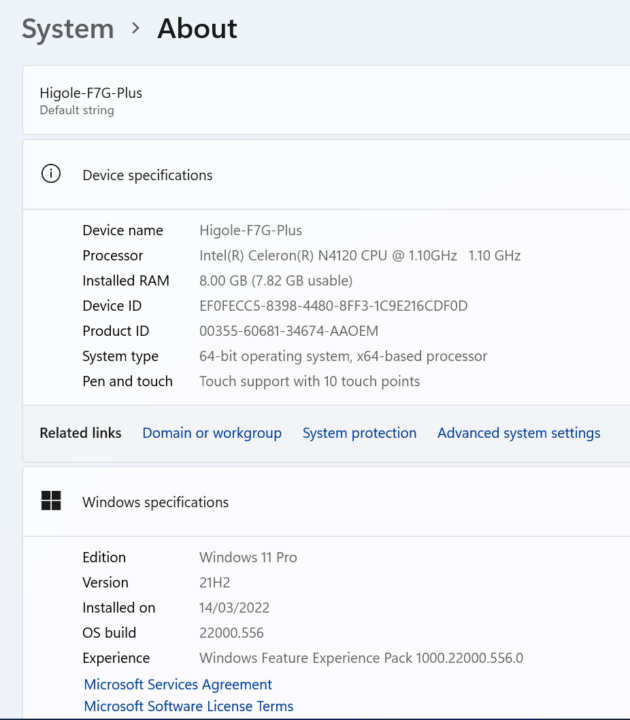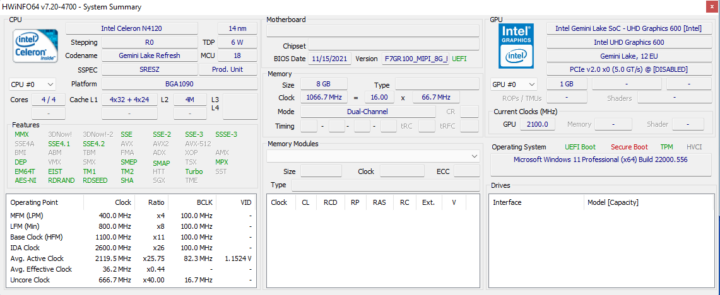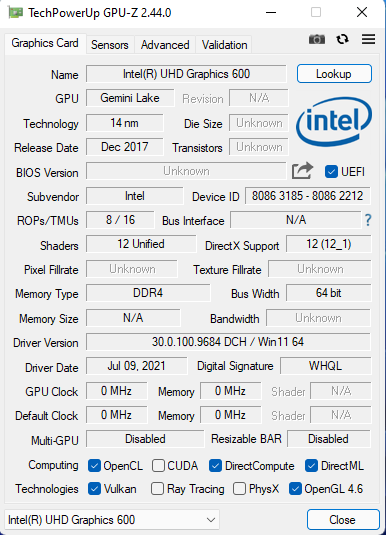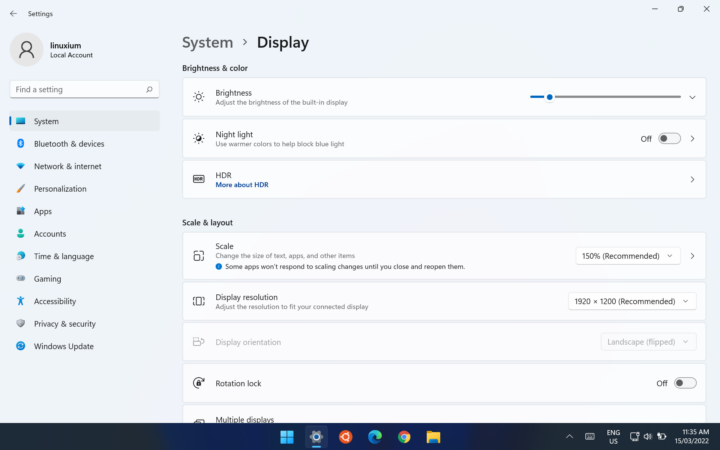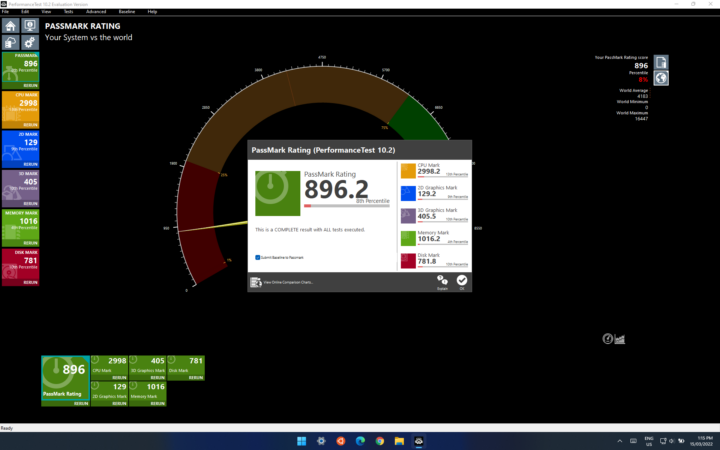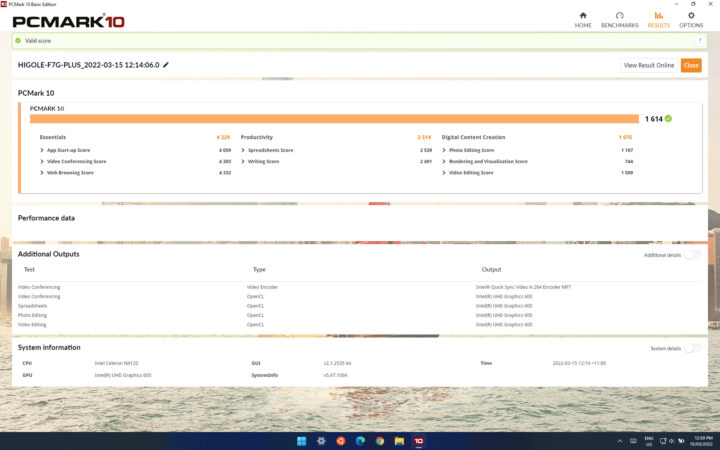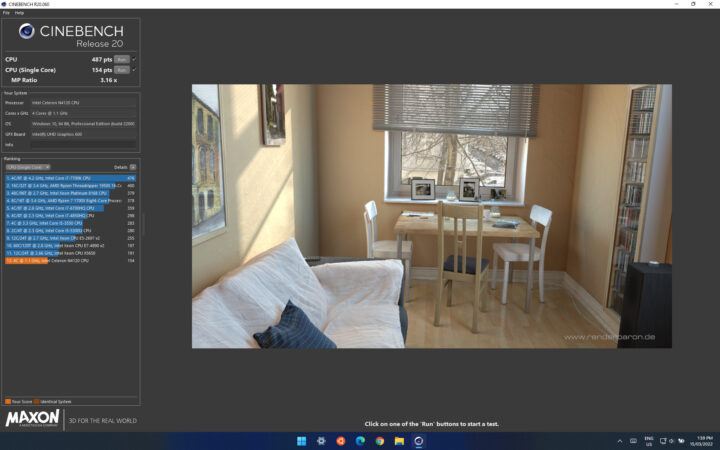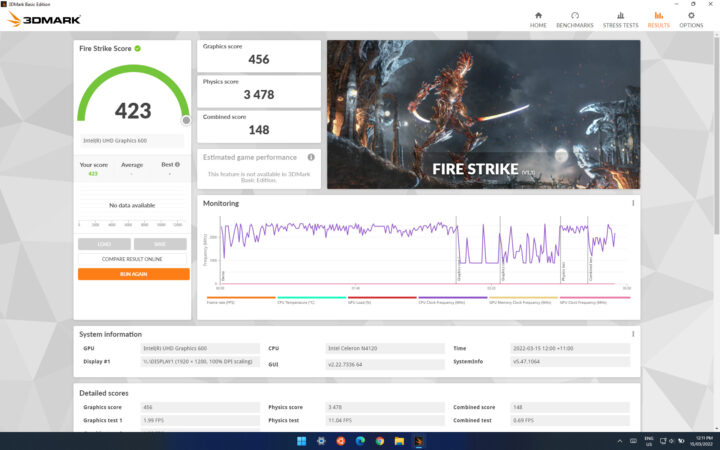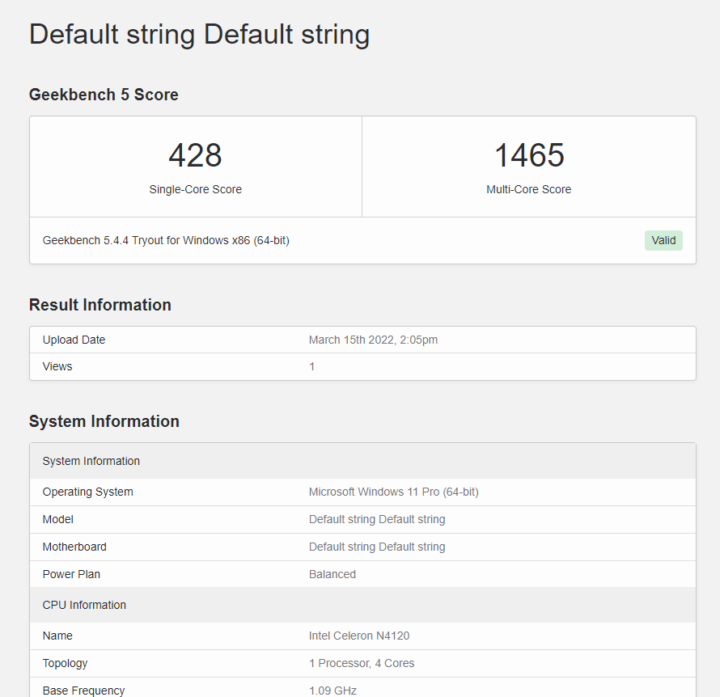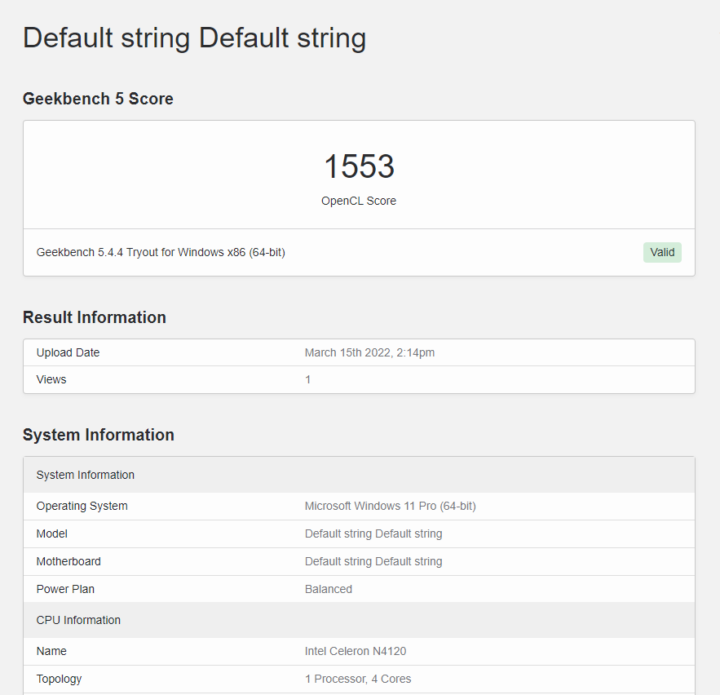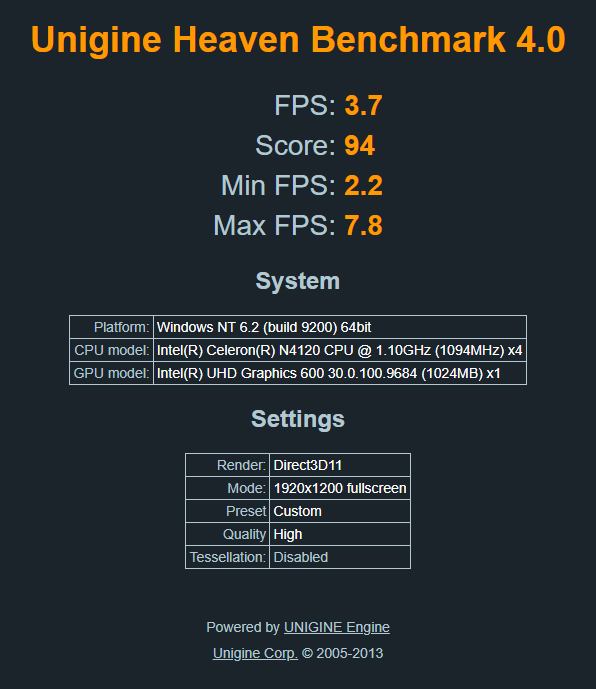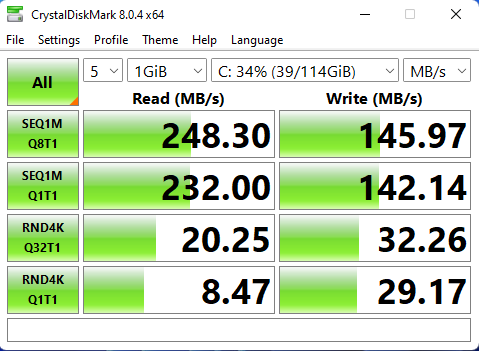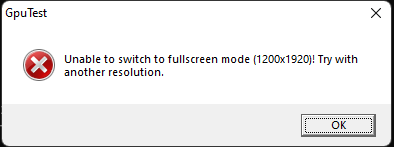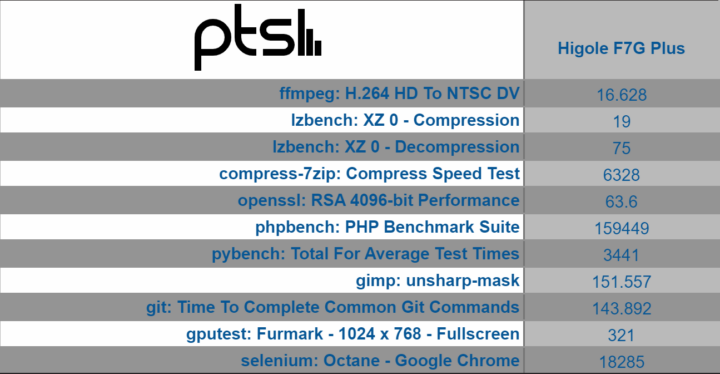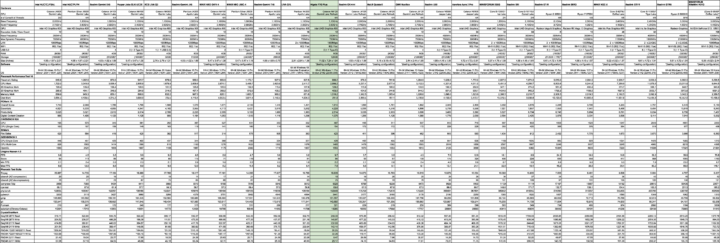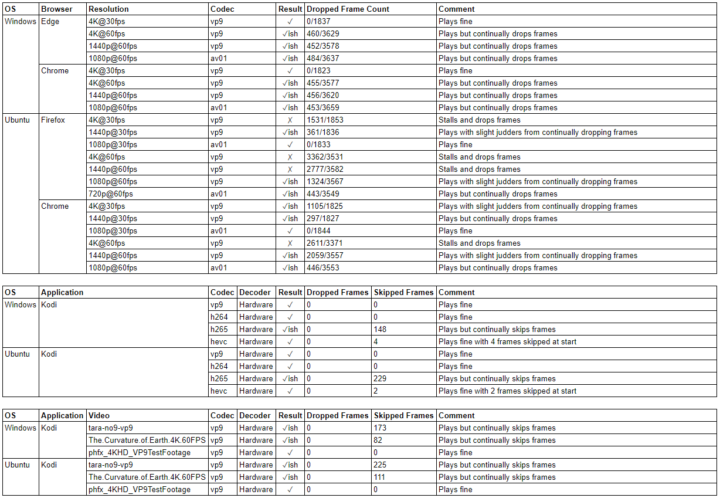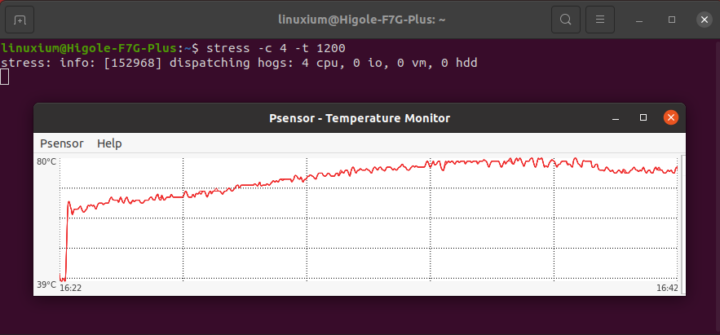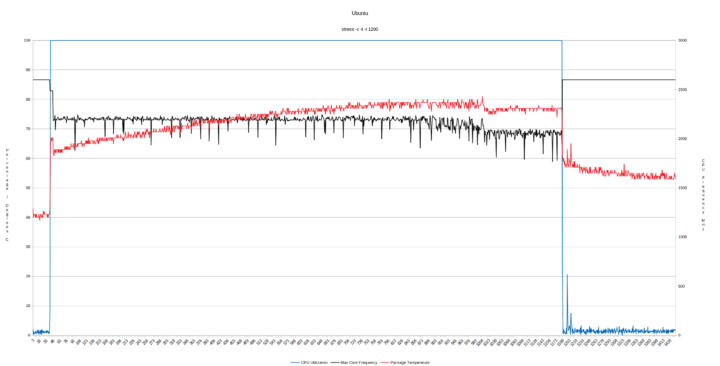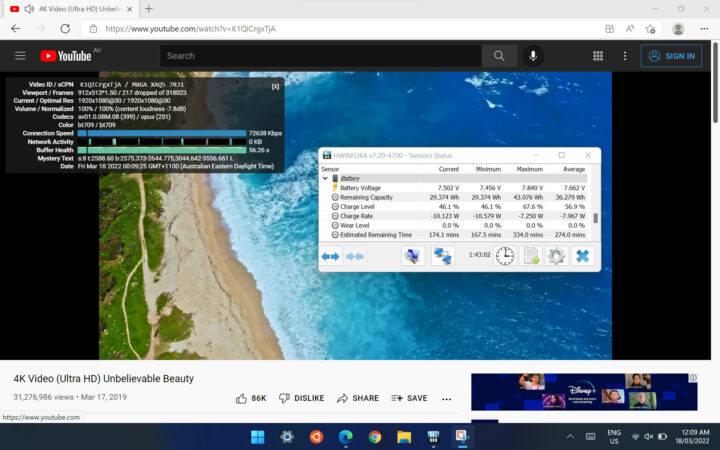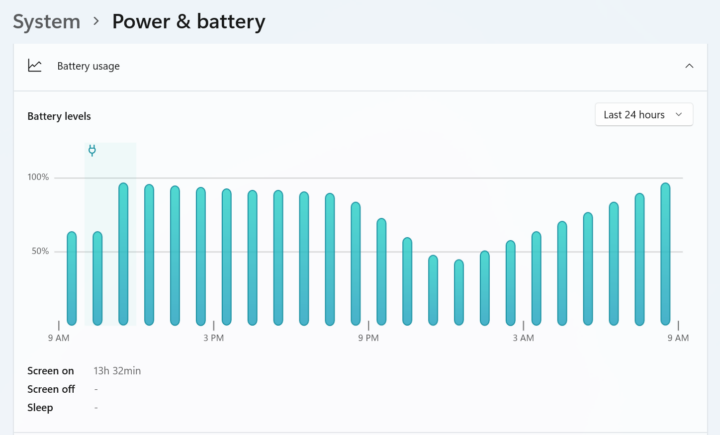Ruggedized industrial-use PCs are typically expensive so it is refreshing to see Higole F7G Plus, an Intel Gemini Lake Refresh tablet, being offered at an affordable price. Higole kindly sent one for review and I’ve looked at functionality and performance running on Ubuntu and also its Windows performance.
Hardware Overview
The Higole F7G Plus is a 10.1 inch IPS touch screen rugged industrial fanless tablet that uses Intel’s 14 nm Gemini Lake Refresh N4120 processor which is a quad-core 4-thread 1.10 GHz Celeron processor boosting to 2.60 GHz with Intel’s UHD Graphics.
Designwise, meeting the MIL-STD-810G standard which is the de facto ‘ruggedized’ standard for consumer products and covers whether the device can work in a broad range of environmental conditions including surviving dropping, is evidenced by the thick protective shell around the tablet.
To ensure its IP67 Certification for waterproofing each of the ports are covered by detachable rubber grommets:
These grommets need to be carefully pushed into their recesses to ensure a fully watertight seal and they are arranged as four-panel covers around the table. Looking first at the top left, removing the grommet reveals a headphone jack, sim card slot, micro SD card slot, and a Type-C USB 3.0 port. Below in the bottom left panel are a USB 3.0 port, a micro HDMI port, and a power jack. Along the top are rubber-covered push buttons for ‘F1’, power on/off, and volume up/down. On the right, the top panel contains a single COM port and the bottom right panel houses a full-sized Gigabit Ethernet port and a further USB 3.0 port. The bottom of the tablet includes a small waterproof pogo pin panel as the tablet can be connected to a dock station.
Two docks are available. The first is a desk docking station that also includes a power jack, two USB 2.0 ports, a Fast Ethernet port, a COM port, and a Kensington lock slot.
There is also a vehicle docking station that includes similar ports and comes with a variety of accessories:
Internally to the tablet is soldered-on 8GB LPDDR4 2133MHz memory operating in dual-channel and a soldered-on Intel Wireless-AC 3165 chip together with soldered-on 128GB eMMC storage (the review model included Windows 11 Pro installed).
The tablet is also available with optional industrial/commercial-use configurations and the review tablet included a fingerprint reader, a QR scanner, an NFC reader, and support for 4G LTE.
Finally, the tablet includes a carrying handle and hand strap holder like the earlier Gole F7 (Apollo Lake), also reviewed on CNX Software.
The full specifications state:
Review Methodology
The specifications include Windows as a supported operating system however for Ubuntu it intriguingly states ‘Test by end user’. So for this review, I will specifically test Ubuntu and whether the ‘industrial/commercial’ configuration inclusions mentioned above will work properly. However, for comparison, I’ll also include looking at performance under Windows as well and compare the performance against some of the more recently released mini PCs.
I will use Ubuntu 20.04.4 LTS and Windows 11 version 21H2 and test with my usual selection of Linux and Windows benchmarks which includes Thomas Kaiser’s ‘sbc-bench’ which is a small set of different CPU performance tests focusing on server performance when run on Ubuntu. I will also use ‘Phoronix Test Suite’ and benchmark with the same set of tests on both Ubuntu and Windows for comparison purposes. On Ubuntu, I will also compile the v5.4 Linux kernel using the default config as a test of performance using a real-world scenario.
Prior to benchmarking, I perform all necessary installations and updates to run the latest versions of both OSes. I also capture some basic details of the device for each OS.
Higole F7G Plus Ubuntu Testing
Initially, the F7G Plus came installed with a licensed copy of Windows 11 Pro so after shrinking the Windows partition by 50 GB I created a new partition into which I successfully installed Ubuntu 20.04.4 as dual boot:
The display’s touch screen worked and appeared immediately in landscape mode. It also supports fractional scaling which is useful when using the touch screen interface which is otherwise too small to use without a (not included) stylus:
Whilst Ubuntu provides a limited screen-based keyboard when using the touch interface I found that the ‘onboard’ application was required for full functionality, for example when requiring the control key.
After installation and updates, a brief check showed working Wi-Fi and Bluetooth however audio didn’t work:
So I first tested the headphone jack but nothing was detected and again audio was not working:
I then tried booting the latest Ubuntu 22.04 (Jammy Jellyfish) development ISO from a ‘LiveUSB’ however audio still wasn’t detected.
Next, I checked the 4G LTE which was detected and working:
as was the micro SD card:
The final port in the top left panel is the Type-C USB port. Testing revealed that this is data only and video output is not possible. Using a Samsung 980 PRO PCle 4.0 NVMe M.2 SSD housed in a ‘USB to M.2 NVMe adapter’ (ORICO M2PAC3-G20 M.2 NVMe SSD Enclosure) also confirmed that it was only a USB 3.0 port (USB 3.2 Gen 1×1 i.e. 5 Gbit/s):
Next testing the USB port of the bottom panel confirmed it was also USB 3.0:
as was the USB port in the opposite bottom right panel.
The other port in the bottom left panel is the micro HDMI port. I had a few problems getting this to work properly but I suspect this is because my HDMI adapter is worn and about to fail completely which is an unfortunate issue common to these small HDMI ports and why video from the Type-C port would have been so welcome. However once connected HDMI audio was also not recognized:
However, this could be successfully fixed by adding ‘snd_intel_dspcfg.dsp_driver=1’ as a GRUB2 kernel boot parameter:
The bottom right panel includes an Ethernet port that is capable of one gigabit per second speeds:
Whilst connected to the desk dock I also tested its two USB ports which were confirmed to be High-Speed USB 2.0:
and the dock’s Ethernet port was a Fast Ethernet port:
Both cameras worked with the rear 5 Megapixel camera as expected capable of a larger range of resolutions…
…than the front camera:
Looking at the remaining ‘industrial/commercial’ functionality, firstly the fingerprint reader:
is not supported by ‘libfprint’ on Linux.
However, both the QR scanner and NFC reader worked without issue. Simply pressing the ‘F1’ button and placing a barcode into the red light emitting from the scanner resulted in it being recognized and captured into an application, in this instance, notepad:
Likewise, after placing an NFC card (I used an Opal card which is a contactless transport smartcard ticket issued for public transport in NSW, Australia) over the NFC reader on the back of the device it was recognized and the tablet beeped with the card number again being captured into the notepad application.
Finally, the key hardware information under Ubuntu 20.04.4 when connected to the dock is as follows:
|
1 2 3 4 5 6 7 8 9 10 11 12 13 14 15 16 17 18 19 20 21 22 23 24 25 26 27 28 29 30 31 32 33 34 35 36 37 38 39 40 41 42 43 44 45 46 47 48 49 50 51 52 53 54 55 56 57 58 59 60 61 62 63 64 65 66 67 68 69 70 71 72 73 74 75 76 77 78 79 80 81 82 83 84 85 86 87 88 89 90 91 92 93 94 95 96 97 98 99 100 101 102 103 104 105 106 107 108 109 110 111 112 113 114 115 116 117 118 119 120 121 122 123 124 125 126 127 128 129 130 131 132 133 134 135 136 137 138 139 140 141 142 143 144 145 146 147 148 149 150 151 152 153 154 155 156 157 158 159 160 161 162 163 164 165 166 167 168 169 170 171 172 173 174 175 176 177 178 179 180 181 182 183 184 185 186 187 188 189 190 191 192 193 194 195 196 197 198 199 200 201 202 203 204 205 206 207 208 209 210 211 212 213 214 215 216 217 218 219 220 221 222 223 224 225 226 227 228 229 230 231 232 233 234 235 236 237 238 239 240 241 242 243 244 245 246 247 248 249 250 251 252 253 254 255 256 257 258 259 260 261 262 263 264 265 266 267 268 269 270 271 272 273 274 275 276 277 278 279 280 281 282 283 284 285 286 287 288 289 |
linuxium@Higole-F7G-Plus:~$ lsb_release -a Distributor ID: Ubuntu Description: Ubuntu 20.04.4 LTS Release: 20.04 Codename: focal linuxium@Higole-F7G-Plus:~$ linuxium@Higole-F7G-Plus:~$ uname -a Linux Higole-F7G-Plus 5.13.0-35-generic #40~20.04.1-Ubuntu SMP Mon Mar 7 09:18:32 UTC 2022 x86_64 x86_64 x86_64 GNU/Linux linuxium@Higole-F7G-Plus:~$ linuxium@Higole-F7G-Plus:~$ inxi -Fzc0 System: Kernel: 5.13.0-35-generic x86_64 bits: 64 Desktop: Gnome 3.36.9 Distro: Ubuntu 20.04.4 LTS (Focal Fossa) Machine: Type: Convertible Mobo: N/A model: N/A serial: <filter> UEFI: American Megatrends v: F7GR100_MIPI_8G_B13 date: 11/15/2021 Battery: ID-1: BAT0 charge: 61.9 Wh condition: 63.6/60.8 Wh (105%) CPU: Topology: Quad Core model: Intel Celeron N4120 bits: 64 type: MCP L2 cache: 4096 KiB Speed: 1833 MHz min/max: 800/2600 MHz Core speeds (MHz): 1: 1177 2: 1742 3: 2194 4: 904 Graphics: Device-1: Intel UHD Graphics 605 driver: i915 v: kernel Display: server: X.Org 1.20.13 driver: i915 resolution: 1200x1920~52Hz OpenGL: renderer: Mesa Intel UHD Graphics 600 (GLK 2) v: 4.6 Mesa 21.2.6 Audio: Device-1: Intel driver: sof-audio-pci-intel-apl Sound Server: ALSA v: k5.13.0-35-generic Network: Device-1: Intel Wireless 3165 driver: iwlwifi IF: wlp1s0 state: down mac: <filter> Device-2: Realtek RTL8111/8168/8411 PCI Express Gigabit Ethernet driver: r8169 IF: enp2s0 state: up speed: 1000 Mbps duplex: full mac: <filter> Device-3: Realtek RTL8152 Fast Ethernet Adapter type: USB driver: r8152 IF: enx88835db6bce9 state: down mac: <filter> IF-ID-1: wwan0 state: down mac: <filter> Drives: Local Storage: total: 115.23 GiB used: 18.48 GiB (16.0%) ID-1: /dev/mmcblk0 model: SLD128 size: 115.23 GiB Partition: ID-1: / size: 48.97 GiB used: 18.40 GiB (37.6%) fs: ext4 dev: /dev/mmcblk0p5 Sensors: System Temperatures: cpu: 43.0 C mobo: N/A Fan Speeds (RPM): N/A Info: Processes: 221 Uptime: 49m Memory: 7.59 GiB used: 816.7 MiB (10.5%) Shell: new-review-test inxi: 3.0.38 linuxium@Higole-F7G-Plus:~$ linuxium@Higole-F7G-Plus:~$ df -h Filesystem Size Used Avail Use% Mounted on udev 3.8G 0 3.8G 0% /dev tmpfs 778M 2.2M 776M 1% /run /dev/mmcblk0p5 49G 19G 29G 40% / tmpfs 3.8G 0 3.8G 0% /dev/shm tmpfs 5.0M 4.0K 5.0M 1% /run/lock tmpfs 3.8G 0 3.8G 0% /sys/fs/cgroup /dev/loop0 128K 128K 0 100% /snap/bare/5 /dev/loop1 249M 249M 0 100% /snap/gnome-3-38-2004/99 /dev/loop2 62M 62M 0 100% /snap/core20/1328 /dev/loop3 55M 55M 0 100% /snap/snap-store/558 /dev/loop4 66M 66M 0 100% /snap/gtk-common-themes/1519 /dev/loop5 44M 44M 0 100% /snap/snapd/14978 /dev/mmcblk0p1 96M 79M 18M 82% /boot/efi tmpfs 778M 32K 778M 1% /run/user/1000 /dev/loop6 62M 62M 0 100% /snap/core20/1376 /dev/loop7 44M 44M 0 100% /snap/snapd/15177 linuxium@Higole-F7G-Plus:~$ linuxium@Higole-F7G-Plus:~$ lsblk -a NAME MAJ:MIN RM SIZE RO TYPE MOUNTPOINT loop0 7:0 0 4K 1 loop /snap/bare/5 loop1 7:1 0 248.8M 1 loop /snap/gnome-3-38-2004/99 loop2 7:2 0 61.9M 1 loop /snap/core20/1328 loop3 7:3 0 54.2M 1 loop /snap/snap-store/558 loop4 7:4 0 65.2M 1 loop /snap/gtk-common-themes/1519 loop5 7:5 0 43.6M 1 loop /snap/snapd/14978 loop6 7:6 0 61.9M 1 loop /snap/core20/1376 loop7 7:7 0 43.6M 1 loop /snap/snapd/15177 loop8 7:8 0 0 loop mmcblk0 179:0 0 115.2G 0 disk ├─mmcblk0p1 179:1 0 100M 0 part /boot/efi ├─mmcblk0p2 179:2 0 16M 0 part ├─mmcblk0p3 179:3 0 64.1G 0 part ├─mmcblk0p4 179:4 0 1000M 0 part └─mmcblk0p5 179:5 0 50G 0 part / mmcblk0boot0 179:8 0 4M 1 disk mmcblk0boot1 179:16 0 4M 1 disk linuxium@Higole-F7G-Plus:~$ linuxium@Higole-F7G-Plus:~$ sudo lshw -C cpu *-cpu description: CPU product: Intel(R) Celeron(R) N4120 CPU @ 1.10GHz vendor: Intel Corp. physical id: 37 bus info: cpu@0 version: Intel(R) Celeron(R) N4120 CPU @ 1.10GHz slot: SOCKET 0 size: 591MHz capacity: 2700MHz width: 64 bits clock: 100MHz capabilities: lm fpu fpu_exception wp vme de pse tsc msr pae mce cx8 apic sep mtrr pge mca cmov pat pse36 clflush dts acpi mmx fxsr sse sse2 ss ht tm pbe syscall nx pdpe1gb rdtscp x86-64 constant_tsc art arch_perfmon pebs bts rep_good nopl xtopology nonstop_tsc cpuid aperfmperf tsc_known_freq pni pclmulqdq dtes64 monitor ds_cpl vmx est tm2 ssse3 sdbg cx16 xtpr pdcm sse4_1 sse4_2 x2apic movbe popcnt tsc_deadline_timer aes xsave rdrand lahf_lm 3dnowprefetch cpuid_fault cat_l2 cdp_l2 ssbd ibrs ibpb stibp ibrs_enhanced tpr_shadow vnmi flexpriority ept vpid ept_ad fsgsbase tsc_adjust smep erms mpx rdt_a rdseed smap clflushopt intel_pt sha_ni xsaveopt xsavec xgetbv1 xsaves dtherm ida arat pln pts umip rdpid md_clear arch_capabilities cpufreq configuration: cores=4 enabledcores=4 threads=4 linuxium@Higole-F7G-Plus:~$ linuxium@Higole-F7G-Plus:~$ sudo lshw -C memory *-firmware description: BIOS vendor: American Megatrends Inc. physical id: 0 version: F7GR100_MIPI_8G_B13 date: 11/15/2021 size: 64KiB capacity: 4544KiB capabilities: pci upgrade shadowing cdboot bootselect socketedrom edd int13floppy1200 int13floppy720 int13floppy2880 int5printscreen int9keyboard int14serial int17printer acpi usb biosbootspecification uefi *-memory description: System Memory physical id: 23 slot: System board or motherboard size: 8GiB *-bank:0 description: DIMM LPDDR4 Synchronous 2133 MHz (0.5 ns) product: 123456789012345678 vendor: ABCD physical id: 0 serial: <filter> slot: A1_DIMM0 size: 2GiB width: 16 bits clock: 2133MHz (0.5ns) *-bank:1 description: DIMM LPDDR4 Synchronous 2133 MHz (0.5 ns) product: 123456789012345678 vendor: ABCD physical id: 1 serial: <filter> slot: A1_DIMM1 size: 2GiB width: 16 bits clock: 2133MHz (0.5ns) *-bank:2 description: DIMM LPDDR4 Synchronous 2133 MHz (0.5 ns) product: 123456789012345678 vendor: ABCD physical id: 2 serial: <filter> slot: A1_DIMM2 size: 2GiB width: 16 bits clock: 2133MHz (0.5ns) *-bank:3 description: DIMM LPDDR4 Synchronous 2133 MHz (0.5 ns) product: 123456789012345678 vendor: ABCD physical id: 3 serial: <filter> slot: A1_DIMM3 size: 2GiB width: 16 bits clock: 2133MHz (0.5ns) *-cache:0 description: L1 cache physical id: 35 slot: CPU Internal L1 size: 224KiB capacity: 224KiB capabilities: synchronous internal write-back configuration: level=1 *-cache:1 description: L2 cache physical id: 36 slot: CPU Internal L2 size: 4MiB capacity: 4MiB capabilities: synchronous internal write-back unified configuration: level=2 linuxium@Higole-F7G-Plus:~$ linuxium@Higole-F7G-Plus:~$ free -mh total used free shared buff/cache available Mem: 7.6Gi 734Mi 5.7Gi 193Mi 1.2Gi 6.4Gi Swap: 2.0Gi 0B 2.0Gi linuxium@Higole-F7G-Plus:~$ linuxium@Higole-F7G-Plus:~$ sudo lshw -C network *-network description: Wireless interface product: Wireless 3165 vendor: Intel Corporation physical id: 0 bus info: pci@0000:01:00.0 logical name: wlp1s0 version: 81 serial: <filter> width: 64 bits clock: 33MHz capabilities: pm msi pciexpress bus_master cap_list ethernet physical wireless configuration: broadcast=yes driver=iwlwifi driverversion=5.13.0-35-generic firmware=29.1654887522.0 7265D-29.ucode latency=0 link=no multicast=yes wireless=IEEE 802.11 resources: irq:130 memory:a1200000-a1201fff *-network description: Ethernet interface product: RTL8111/8168/8411 PCI Express Gigabit Ethernet Controller vendor: Realtek Semiconductor Co., Ltd. physical id: 0 bus info: pci@0000:02:00.0 logical name: enp2s0 version: 15 serial: <filter> size: 1Gbit/s capacity: 1Gbit/s width: 64 bits clock: 33MHz capabilities: pm msi pciexpress msix bus_master cap_list ethernet physical tp mii 10bt 10bt-fd 100bt 100bt-fd 1000bt-fd autonegotiation configuration: autonegotiation=on broadcast=yes driver=r8169 driverversion=5.13.0-35-generic duplex=full firmware=rtl8168h-2_0.0.2 02/26/15 ip=<filter> latency=0 link=yes multicast=yes port=twisted pair speed=1Gbit/s resources: irq:23 ioport:e000(size=256) memory:a1104000-a1104fff memory:a1100000-a1103fff *-network:0 DISABLED description: Ethernet interface physical id: 1 bus info: usb@1:3 logical name: wwan0 serial: <filter> capabilities: ethernet physical configuration: autonegotiation=off broadcast=yes driver=cdc_mbim driverversion=5.13.0-35-generic duplex=half firmware=CDC MBIM link=no multicast=yes port=twisted pair *-network:1 description: Ethernet interface physical id: 2 bus info: usb@1:8.7 logical name: enx88835db6bce9 serial: <filter> size: 10Mbit/s capacity: 100Mbit/s capabilities: ethernet physical tp mii 10bt 10bt-fd 100bt 100bt-fd autonegotiation configuration: autonegotiation=on broadcast=yes driver=r8152 driverversion=v1.12.11 duplex=half link=no multicast=yes port=MII speed=10Mbit/s linuxium@Higole-F7G-Plus:~$ linuxium@Higole-F7G-Plus:~$ sudo lshw -C display *-display description: VGA compatible controller product: UHD Graphics 605 vendor: Intel Corporation physical id: 2 bus info: pci@0000:00:02.0 version: 06 width: 64 bits clock: 33MHz capabilities: pciexpress msi pm vga_controller bus_master cap_list configuration: driver=i915 latency=0 resources: irq:131 memory:a0000000-a0ffffff memory:90000000-9fffffff ioport:f000(size=64) memory:c0000-dffff linuxium@Higole-F7G-Plus:~$ linuxium@Higole-F7G-Plus:~$ dmesg | grep "MMC card" [ 1.507938] mmc0: new HS400 MMC card at address 0001 linuxium@Higole-F7G-Plus:~$ linuxium@Higole-F7G-Plus:~$ lsusb Bus 002 Device 003: ID 05e3:0616 Genesys Logic, Inc. hub Bus 002 Device 002: ID 05e3:0616 Genesys Logic, Inc. hub Bus 002 Device 001: ID 1d6b:0003 Linux Foundation 3.0 root hub Bus 001 Device 017: ID 0bda:8152 Realtek Semiconductor Corp. RTL8152 Fast Ethernet Adapter Bus 001 Device 015: ID 1a86:7523 QinHeng Electronics HL-340 USB-Serial adapter Bus 001 Device 016: ID 0403:6015 Future Technology Devices International, Ltd Bridge(I2C/SPI/UART/FIFO) Bus 001 Device 014: ID 1a40:0101 Terminus Technology Inc. Hub Bus 001 Device 013: ID 2808:9338 Sycreader USB HID READER Bus 001 Device 012: ID 1eab:1a03 Bus 001 Device 011: ID 1a40:0201 Terminus Technology Inc. FE 2.1 7-port Hub Bus 001 Device 009: ID 0bda:5876 Realtek Semiconductor Corp. Back Camera Bus 001 Device 007: ID 0bda:5842 Realtek Semiconductor Corp. Front Camera Bus 001 Device 005: ID 8087:0a2a Intel Corp. Bus 001 Device 010: ID 05e3:0610 Genesys Logic, Inc. 4-port hub Bus 001 Device 008: ID 046d:c31c Logitech, Inc. Keyboard K120 Bus 001 Device 006: ID 093a:2510 Pixart Imaging, Inc. Optical Mouse Bus 001 Device 004: ID 05e3:0610 Genesys Logic, Inc. 4-port hub Bus 001 Device 003: ID 2c7c:0125 Quectel Wireless Solutions Co., Ltd. EC25 LTE modem Bus 001 Device 002: ID ffff:0035 Sycreader USB HID READER Bus 001 Device 001: ID 1d6b:0002 Linux Foundation 2.0 root hub linuxium@Higole-F7G-Plus:~$ linuxium@Higole-F7G-Plus:~$ lspci -nn 00:00.0 Host bridge [0600]: Intel Corporation Gemini Lake Host Bridge [8086:31f0] (rev 06) 00:00.1 Signal processing controller [1180]: Intel Corporation Celeron/Pentium Silver Processor Dynamic Platform and Thermal Framework Processor Participant [8086:318c] (rev 06) 00:02.0 VGA compatible controller [0300]: Intel Corporation UHD Graphics 605 [8086:3185] (rev 06) 00:0e.0 Multimedia audio controller [0401]: Intel Corporation Device [8086:3198] (rev 06) 00:0f.0 Communication controller [0780]: Intel Corporation Celeron/Pentium Silver Processor Trusted Execution Engine Interface [8086:319a] (rev 06) 00:12.0 SATA controller [0106]: Intel Corporation Device [8086:31e3] (rev 06) 00:13.0 PCI bridge [0604]: Intel Corporation Gemini Lake PCI Express Root Port [8086:31d8] (rev f6) 00:13.1 PCI bridge [0604]: Intel Corporation Gemini Lake PCI Express Root Port [8086:31d9] (rev f6) 00:13.2 PCI bridge [0604]: Intel Corporation Gemini Lake PCI Express Root Port [8086:31da] (rev f6) 00:15.0 USB controller [0c03]: Intel Corporation Device [8086:31a8] (rev 06) 00:16.0 Signal processing controller [1180]: Intel Corporation Celeron/Pentium Silver Processor Serial IO I2C Host Controller [8086:31ac] (rev 06) 00:16.1 Signal processing controller [1180]: Intel Corporation Celeron/Pentium Silver Processor Serial IO I2C Host Controller [8086:31ae] (rev 06) 00:16.2 Signal processing controller [1180]: Intel Corporation Device [8086:31b0] (rev 06) 00:16.3 Signal processing controller [1180]: Intel Corporation Device [8086:31b2] (rev 06) 00:17.0 Signal processing controller [1180]: Intel Corporation Device [8086:31b4] (rev 06) 00:17.1 Signal processing controller [1180]: Intel Corporation Device [8086:31b6] (rev 06) 00:17.2 Signal processing controller [1180]: Intel Corporation Device [8086:31b8] (rev 06) 00:17.3 Signal processing controller [1180]: Intel Corporation Device [8086:31ba] (rev 06) 00:18.0 Signal processing controller [1180]: Intel Corporation Celeron/Pentium Silver Processor Serial IO UART Host Controller [8086:31bc] (rev 06) 00:18.1 Signal processing controller [1180]: Intel Corporation Celeron/Pentium Silver Processor Serial IO UART Host Controller [8086:31be] (rev 06) 00:18.2 Signal processing controller [1180]: Intel Corporation Celeron/Pentium Silver Processor Serial IO UART Host Controller [8086:31c0] (rev 06) 00:18.3 Signal processing controller [1180]: Intel Corporation Celeron/Pentium Silver Processor Serial IO UART Host Controller [8086:31ee] (rev 06) 00:19.0 Signal processing controller [1180]: Intel Corporation Celeron/Pentium Silver Processor Serial IO SPI Host Controller [8086:31c2] (rev 06) 00:19.1 Signal processing controller [1180]: Intel Corporation Celeron/Pentium Silver Processor Serial IO SPI Host Controller [8086:31c4] (rev 06) 00:19.2 Signal processing controller [1180]: Intel Corporation Celeron/Pentium Silver Processor Serial IO SPI Host Controller [8086:31c6] (rev 06) 00:1c.0 SD Host controller [0805]: Intel Corporation Celeron/Pentium Silver Processor SDA Standard Compliant SD Host Controller [8086:31cc] (rev 06) 00:1e.0 SD Host controller [0805]: Intel Corporation Device [8086:31d0] (rev 06) 00:1f.0 ISA bridge [0601]: Intel Corporation Device [8086:31e8] (rev 06) 00:1f.1 SMBus [0c05]: Intel Corporation Celeron/Pentium Silver Processor Gaussian Mixture Model [8086:31d4] (rev 06) 01:00.0 Network controller [0280]: Intel Corporation Wireless 3165 [8086:3165] (rev 81) 02:00.0 Ethernet controller [0200]: Realtek Semiconductor Co., Ltd. RTL8111/8168/8411 PCI Express Gigabit Ethernet Controller [10ec:8168] (rev 15) linuxium@Higole-F7G-Plus:~$ |
I then set the CPU Scaling Governor to ‘performance’ and ran my Linux benchmarks for which the majority of the results are text-based but the graphical ones included:
the latter can be directly compared to the result from running ‘Heaven’ on Windows:
I also ran PassMark PerformanceTest Linux:
which similarly can be directly compared to the results from when it was run on Windows:
Running my ‘Phoronix Test Suite’ benchmarks encountered two issues. There was an error when running the ‘Furmark’ test in Windows so the test had to be run using a resolution setting of 1024 x 768. Also the ‘Selenium’ test failed as usual when running with ‘Chrome’ due to the benchmark driver used by the test not being supported by the current Chrome release so the Octane tests were run manually and edited into the final results. The full set of results was:
All these results can then be compared with other recent mini PCs:
showing this is a low-powered CPU and iGPU combination and the results highlight the impact on performance caused by the slow eMMC storage.
Windows 11 Testing
The HiGole F7G Plus came installed with a licensed copy of Windows 11 Pro version 21H1 which after applying updates was build 22000.556. A quick look at the hardware information showed it is aligned to the specification:
The memory showed limited details in HWiNFO and GPU-Z:
A brief check showed that everything was working including the audio and fingerprint reader.
Similar to Ubuntu setting the scale to 150% was useful when using the touch screen interface;
I then set the power mode to ‘High performance’ and ran my standard set of benchmarking tools to look at performance under Windows:
As mentioned above the ‘Furmark’ test from Phoronix Test Suite refused to run in the default full screen mode:
so a resolution of 1024 x 768 was used and the full set of results was:
The complete results together with a comparison against other recent mini PCs are:
Video Playback in Browsers (YouTube) & Kodi
For real-world testing, I played some videos in Edge, Chrome, and Kodi on Windows and in Firefox, Chrome, and Kodi on Ubuntu. Windows performed best with browsers playing 4K @ 30 FPS flawlessly whereas on Ubuntu 1080p @ 30 FPS was required for the same quality of playback. 4K videos didn’t fare so well and neither did H.265 encoded videos. The following tables summarise all the tests and results for each:
HiGole F7G Plus thermals
The F7G Plus uses passive cooling and running a stress test on Ubuntu saw the CPU temperature rise to a peak of 81°C which triggered thermal throttling to then average the temperature down to around 77°C for the final part of the test:
During the stress test at an ambient room temperature of 22.6°C, only the back of the device warmed up significantly but it was not too hot to touch and measured at around 40°C.
If the CPU frequency is monitored during the stress test it can be seen that during the first part of the test whilst the temperature was climbing it averaged 2.2 GHz which then dropped to an average of 2.0 GHz for the remaining duration of the test as a result of the throttling:
Networking
Network connectivity throughput was measured on Ubuntu using ‘iperf’ with the tablet undocked:
The 2.4 GHz performance was particularly poor compared to other devices using the same WiFi chip.
HiGole F7G Glus battery testing
The tablet uses an 8,000 mAh battery with the specifications claiming around 8 hours of usage for FHD local video playback. To test, I looped a 1080p @ 30 FPS video playing in Edge. After about five hours of continuous playing the charge level dipped below 50% which aligns with the expected capacity:
The device was then placed in the desk docking station and allowed to recharge which took around eight hours:
Final Observations
Whilst this is a low-powered tablet using an older CPU and iGPU with only 12 execution units, it is also relatively inexpensive for a ruggedized device. Equipped with a high-quality IPS touch screen, the optional port functionality meets the typical needs for industrial or commercial usage. The fact that almost everything works under Ubuntu with the exception of audio and the fingerprint reader still makes this a viable device for those whose needs also include running specific Linux applications.
| Highlights | Limitations |
|---|---|
| Rugged and waterproof | No Type-C USB video out |
| Industrial / commercial port functionality | Slow eMMC storage |
| Relative low cost | Audio and fingerprint not working in Ubuntu |
I’d like to thank Higole for providing the F7G Plus for review. Further details can be found on Higole’s product page, or if ordering directly, indicative pricing can be found on the online store.

Ian is interested in mini PCs and helps with reviews of mini PCs running Windows, Ubuntu and other Linux operating systems. You can follow him on Facebook or Twitter.
Support CNX Software! Donate via cryptocurrencies, become a Patron on Patreon, or purchase goods on Amazon or Aliexpress


